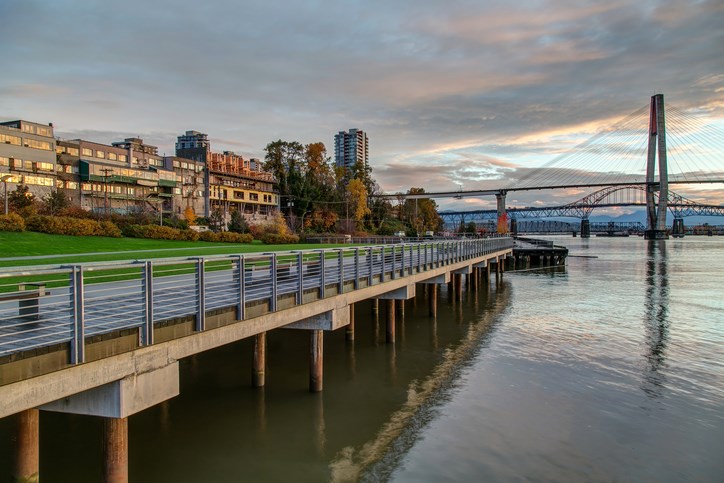The City of New Westminster is averaging more than 50 new building permits every month this year, on a pace to edge out the $189 million in permits issued in 2016, the 10th straight year the Royal City has topped $100 million in permit values.
As of the end of May, permit values had already eclipsed $144.5 million, and housing starts, at 612 units, were far ahead of the 339 starts in the same period last year.
“If the pace holds, [2017] will work out to a 12.7% increase from the previous year,” said Blair Fryer, communications and development manager for the city of 71,000 on the banks of the Fraser River.
There is little doubt the pace will hold up.
This month, New Westminster council approved zoning for the largest tower the city has ever seen: Bosa Development’s 53-storey condominium skyscraper.
The building is part of a project that will include a second 43-storey tower and a three-storey commercial building, all built on the New Westminster riverfront.
The anchor tower of Bosa’s Pier West would be the tallest building between Vancouver and Calgary if built today.
“We saw overwhelming support for a two-tower scheme that opened up the skylines, with a modest increase in height,” said Dan Diebolt, development manager at Bosa Development.
Bosa bought the 660 Quayside site from Larco Developments last August for $63 million, which works out to $79 per buildable square foot, according to Colliers International. (Today, this could be seen as a bargain price, considering a non-waterfront site on Duncan Street in New Westminster sold this spring at $89 per buildable square foot.)
Larco’s original development plan called for 1,000 housing units in five towers. Bosa’s bid scaled that back to three buildings and 665 homes, mostly tower condominiums with a total density of 4.52 floor space ratio. Bosa had to earn the variance that allowed the zoning to go an extra eight floors of prime waterfront condo space that is expected to pre-sell for north of $750 per square foot.
The new development will provide approximately two acres of additional park and public open space, including an extension to the Westminster Pier Park. Fryer said it will also update pedestrian and cyclist access to New Westminster’s waterfront, including completion of the esplanade that connects the entrance to Westminster Pier Park and the River Market, along with a 40-space child-care facility.
To keep River Market merchants and existing residents in the waterfront area on board, Bosa also agreed to use a type of pile driving aimed at minimizing noise and will delay the construction start to ensure parking is provided at a neighbouring site.
Construction is now expected to start in the spring of 2018. Completion of Phase 1 – the 53-storey tower – is scheduled for the fall of 2021; Phase 2 is projected to be finished in the fall of 2022.
Pier West will also include 80 public parking stalls, 932 parking stalls for the development, and new pedestrian connections between Westminster Pier Park, Fraser River Discovery Centre and River Market.
After more than a decade of breakneck growth, New Westminster has become sophisticated in matching amenities to new developments. The city, for instance, insisted that the Bosa towers be landmark additions to the skyline.
“The part that I am really high on is that these buildings are going to be iconic,” said longtime New Westminster councillor Bill Harper. “That was written right into the design. Iconic means they are going to stand out. They are going to be a symbol, if you like, of New Westminster. When people are on the river, in Surrey or driving across the Pattullo Bridge, those will be some of the major landmarks for our city.”
Mayor Jonathan Cote said the Bosa site has been the “missing link” on the riverfront.
He said one of the city’s biggest successes in the past decade has been connecting the waterfront with the community.

.png;w=120;h=80;mode=crop)

